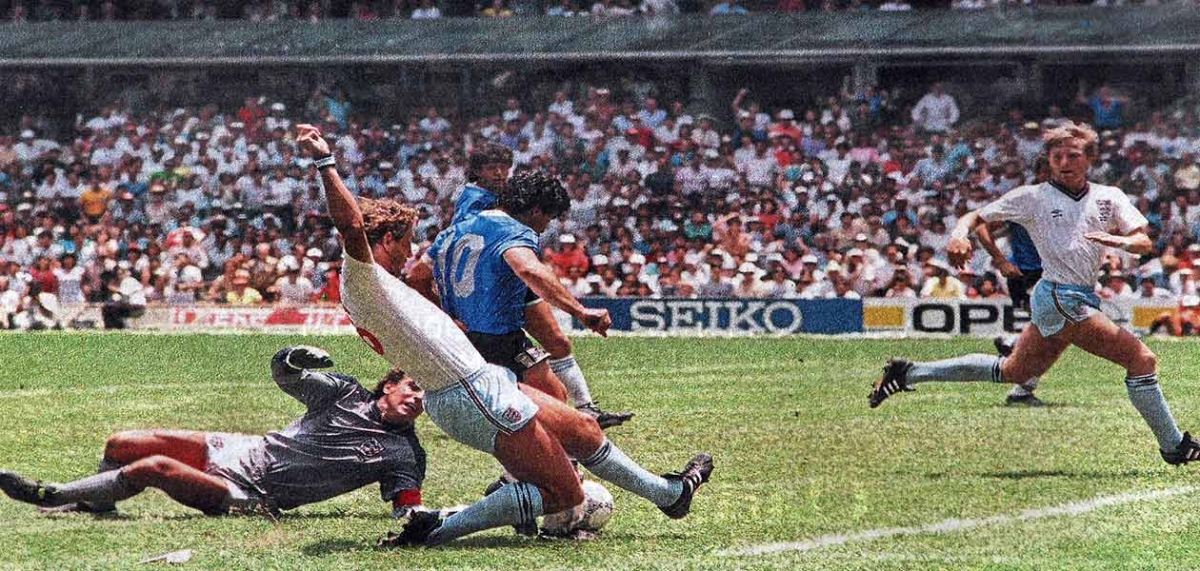Lack of live football has our head of fixed income, Bryn Jones, looking back over past classics. That got him thinking about an old theory of monetary policy that may now be outmoded.
We are all missing sport on the box. For me, football in particular!
I used to play at a reasonable level, and having chosen the City over a non-league football career … a good football analogy is never lost on me. It never fails to fire that nostalgia of the glory days.
I have my father to thank for the decision to give up on the footballer’s life. When I was offered a job at Coutts or looking to trial at Maidstone or Gravesend and Northfleet (now Ebbsfleet) his simple response was: “You are not that good and most likely to be warming the bench on a cold, wet and dreary winter’s night in Macclesfield.” Suddenly, the idea of earning 16 times as much doing admin in a warm office had slightly more appeal to it. Also, at a time when a single malt scotch at your desk was actually encouraged, the office job had even more charm.
And, as it turned out, taking the job with Coutts didn’t mean giving up on football entirely. I spent a number of very enjoyable and successful years playing in the Financial Service Division 1 league for Coutts. I also represented the banks’ league against other representative teams, such as the Marines, Old Boys and Southern Amateurs. Admittedly we lost to the Bank of England (BoE) in the Kent Cup – at one of biggest pitches I’ve ever played on, in Roehampton – so perhaps giving the BoE advice that strays anywhere near football maybe a little misguided, yet here we go.
Back in 2005, then BoE governor Mervyn King gave the Mais Lecture at Cass Business School where he likened monetary policy to Diego Maradona. He talked specifically about the “Maradona theory of interest rates”, an analogy based on that fateful World cup night in Mexico City in June 1986 when England were beaten 2-1. I remember, aged 12, being riveted to the TV as Maradona scored his first goal, the ‘Hand of God’. Mr King referred to this sort of unexpected, time inconsistent and against the rules approach as akin to the “old mystery and mystique approach to central banking”.
Maradona’s second goal, however, was an example of the power of expectations in the modern theory of interest rates. Maradona ran 60 yards from inside his own half beating five players before hitting the onion bag. Watched from above, you see he ran virtually in straight line. How do you score one of the best goals of all time by running in a straight line? The English defenders reacted to what they expected Maradona to do. They reacted to the feints rather than where he actually went. Mr King suggests monetary policy works in a similar way: market interest rates react to what the central bank is expected to do, giving central banks huge power to influence markets without actually having to make large moves in policy.
The recent reaction of central banks, however, reminds me of the last five minutes of the golden age of Manchester United under Sir Alex Ferguson. A distinctive memory of mine is being sat in a bar in Costa del Silencio, Tenerife, watching Fergie’s Alamo tactics in the last minutes of an European cup final between Man U and Bayern Munich. Ole Gunnar Solskjaer and Teddy Sheringham scored stoppage-time goals … a very different way to the get the same 2-1 result. When Man U were down 1-0 Sir Alex figured it was the time to chuck everything at it. Perhaps something Mervyn King missed from his 2005 paper …
Coronavirus lockdowns have meant earnings for some business have collapsed to near zero in the space of weeks. Central banks have had to come up with even more ingenuous ways than the Hand of God to win the game. Yes, it’s been creative and they have broken rules to get stuff done. Just look at the shenanigans in Germany with the German Constitutional Court defying the European Central Bank over the quantitative easing scheme … But I’d liken it to chucking everything at it in injury time when you are 1-0 down. Markets looked beat. The fastest 30% fall in stocks ever. Alongside a speedy rise in government bond yields…the biggest worldwide collapse in consumer confidence…there was little time to be creative in the box with no time…nor could central banks simply run in straight line and get softly-softly influence rates markets. During the recent panic gilt yields just continued to rise and rise – even above levels we had at the start of the year – until the BoE stepped in. Cutting rates was not enough. Fergie Alamo Time was needed: chuck everything at it.
There is some chitter chatter about negative rate expectations in the UK and US, but I don’t think that works. The ECB and Bank of Japan have been zero-bound and below for years. I reckon the Maradona theory of monetary policy no longer works, and now we have Fergie Alamo Time. If that’s not enough, then it’s a whole new ball game!


